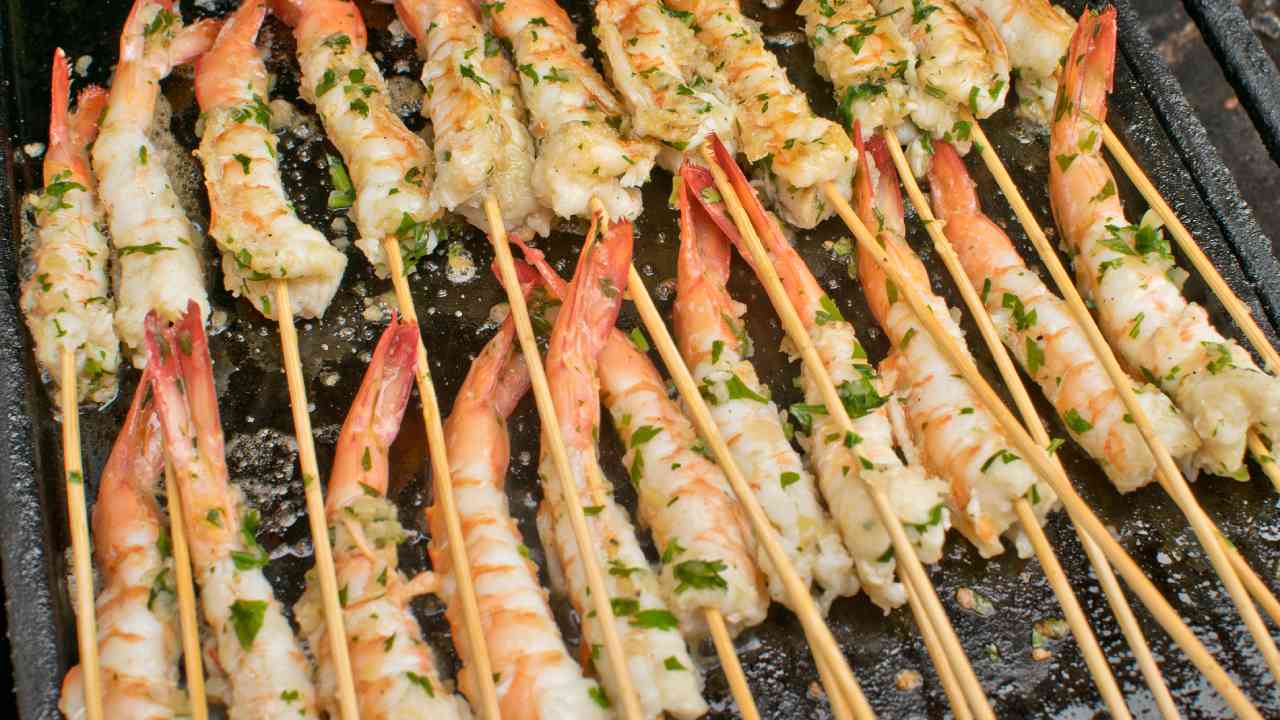Slip a more sustainable prawn on your barbie this Christmas

Australians are set to munch through half a billion prawns this Christmas. But where do all those prawns come from? And can we feel good as we throw another one on the barbie?
About half of the prawns eaten in Australia come from overseas. More than A$200 million worth of frozen prawns were imported in 2011–2012, mainly from southeast and east Asia, and these imports are on the rise.
Most of the imported prawns are farm-grown and the main species is commonly known as vannamei, or white shrimp.
The rapid growth of prawn farming has generated public debate over its sustainability and effects on the environment.
Concerns have surrounded the destruction of mangrove areas, coastal pollution, salinisation, wild prawn collection, the use of marine-based feeds, and conflict with other resource users.
But there is some good news: according to the Food and Agriculture Organization of the United Nations, worldwide environmental certification programs such as Global Gap are having a positive influence on farming practices.
Growers are breeding prawns that use protein more efficiently, and adopting low-water-exchange pond systems with less environmental impact. These aerated systems encourage the growth of bacteria and other microorganisms that recycle unused food. Other advances include better biosecurity and traceability, and reduced chemical residues.
Australian scientists are supporting better aquaculture practices in Vietnam by helping farmers to establish prawn breeding programs that improve farm productivity.
Australian farmed prawns
About 20% of Australian prawns are farm grown. Australia has some 20 prawn farms, located mainly in Queensland. The most common farmed species is the black tiger prawn, followed by the banana prawn.
Australian prawn farmers have worked with scientists to develop healthy, fast-growing prawns that can be produced efficiently on farms that meet the world’s highest standards for environmental management.
Research has also addressed the industry’s perceived dependency on marine-based feeds.
What do prawns eat?
Farmed prawns are fed on a compounded pellet made from a range of ingredients that satisfies their nutritional needs.
In Australia, the ingredients include soybeans, lupins and canola, and recycled waste proteins, plus small amounts of sustainably-sourced fish meal and fish oil. But now the technology exists to phase-out these marine ingredients.
A new food additive developed by CSIRO has been shown to improve prawn growth rates by 30% and eliminates the need for fish products in their diet. The additive is moving towards commercial production in Australia and Asia.
Trawling for prawns
The rest of our prawns are harvested by 500 prawn trawlers that operate across 15 Australian fisheries off Queensland, the Northern Territory, Western Australia, South Australia and New South Wales.
The main species caught are king prawns, banana prawns, tiger prawns, school prawns and endeavour prawns.
Wild-caught Australian prawns are available year-round, although some seasonality occurs. Many of the fisheries are remote, so catches are commonly packaged and frozen on board the vessels.
Australian prawn fisheries, like all Australian fisheries, are recognised as among the best-managed in the world.
Scientists work with managers and industry to set fishing levels that are strictly regulated and monitored. Escape hatches in the trawl nets have been used for more than a decade to reduce the capture of large species, and all prawn fisheries must pass ecological assessments to meet conservation and export regulations.
South Australia’s Spencer Gulf Fishery and the Commonwealth Northern Prawn Fishery have both achieved certification from the Marine Stewardship Council, an independent body that certifies sustainable fisheries worldwide.
Look out for labels
All prawns sold at major supermarkets in Australia must be labelled according to the country of origin.
In some states, such as the Northern Territory and South Australia, that compulsory labelling extends to all seafood retail outlets, including restaurants.
Australian prawn farmers and fishers are trying to encourage people to eat Aussie prawns throughout the year with a Love Australian prawns campaign in an effort to smooth out some of the logistics associated with stocking so many prawns at Christmas.
So if you do want to buy homegrown prawns, look out for the labels at your supermarket, or ask your fishmonger where they’ll be getting their supplies from this Christmas.
Paul Hogan’s famous ‘I’ll slip an extra shrimp on the barbie’ ad from 1984.
Rik Buckworth, Principal Research Scientist, CSIRO and Greg Coman, Aquaculture scientist, CSIRO
This article is republished from The Conversation under a Creative Commons license. Read the original article.
